
How to Reduce Your Toolpath File Size
Got a huge file size for your Mastercam Dynamic toolpath? Cut it down with the right Arc Filter/Tolerance settings!
By John Stauffer and Callie Morgan
Thursday, August 25th, 2022
Mastercam Dynamic Motion toolpaths (i.e. Dynamic Mill, Peel Mill, and OptiRough/OptiRest) are fantastic toolpaths for removing large amounts of material in a short amount of time while protecting your tool from over engagement and heat. These toolpaths use deep axial engagement and smaller radial engagement to do all of this while also evacuating the heat from the cut into the chip. Dynamic Motion revolutionizes the idea of roughing, and you should take every chance you get to use it!
Now, let’s take a look at the consequences of using Dynamic toolpaths. Due to the way these toolpaths engage the material, you will generally end up with code that takes up quite a bit of space, relative to something like a pocket toolpath or contours with multiple passes. A Dynamic toolpath generated without Arc Filtering is made up of A LOT of short G1 moves. This means the posted code will take up A LOT of space. Arc Filtering will help us reduce the code to a more manageable size, while maintaining the cutting action we want from a Dynamic toolpath.
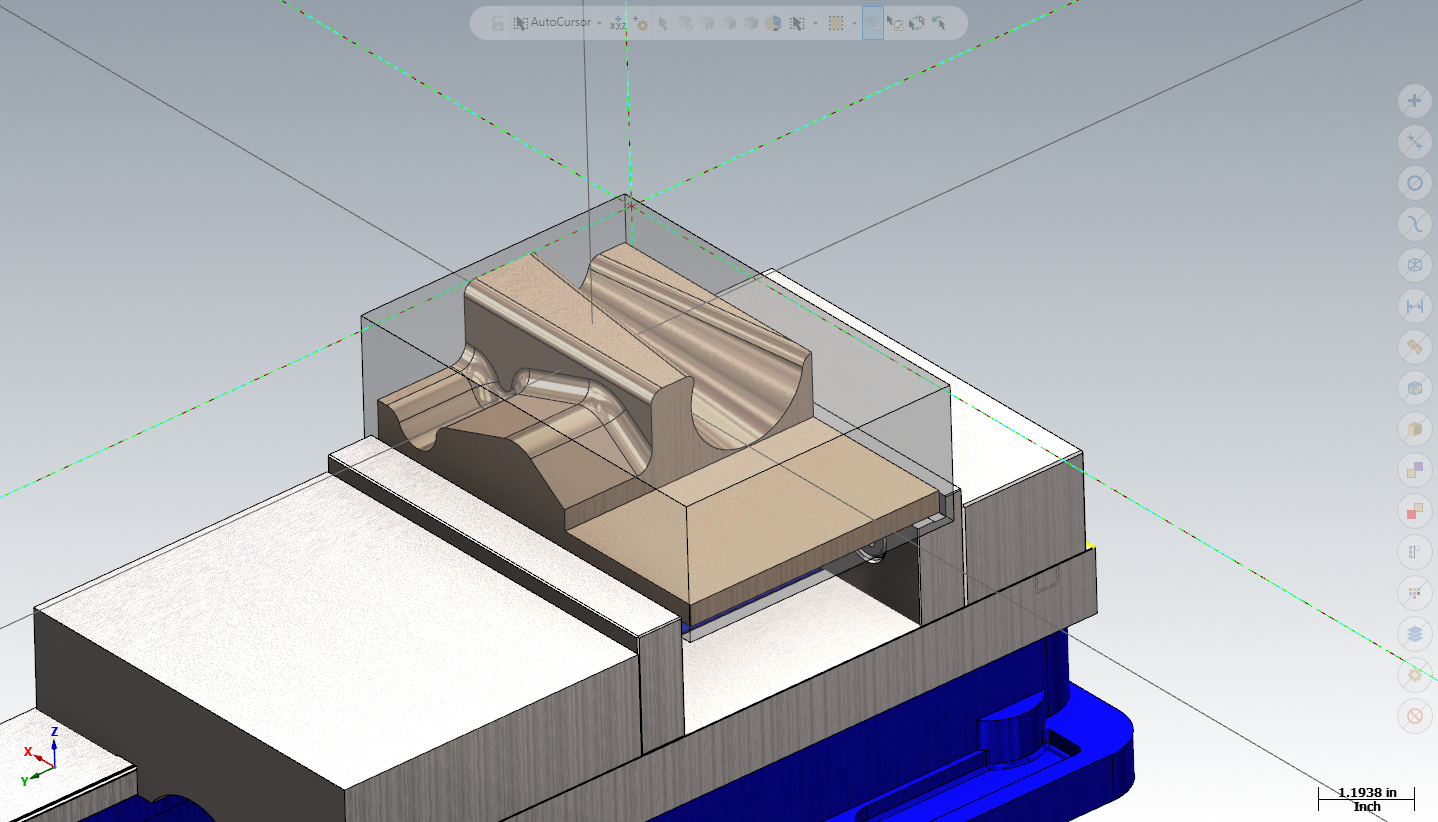
Let’s work through an example: Here we have a part with the stock displayed as translucent. We want to rough this down to shape with a Dynamic OptiRough toolpath using a 3/8in (9.53mm) tool.
Setting the toolpath up with some basic parameters (15% stepover, 200% step down, 15% step up, leaving .015” or .38mm on the walls and floors ). The Arc Filtering and tolerance are set to default (100% cut tolerance with a total tolerance of .001” or .03mm). With these parameters, we end up with a toolpath that has an NCI file size of 7003.4 KB.
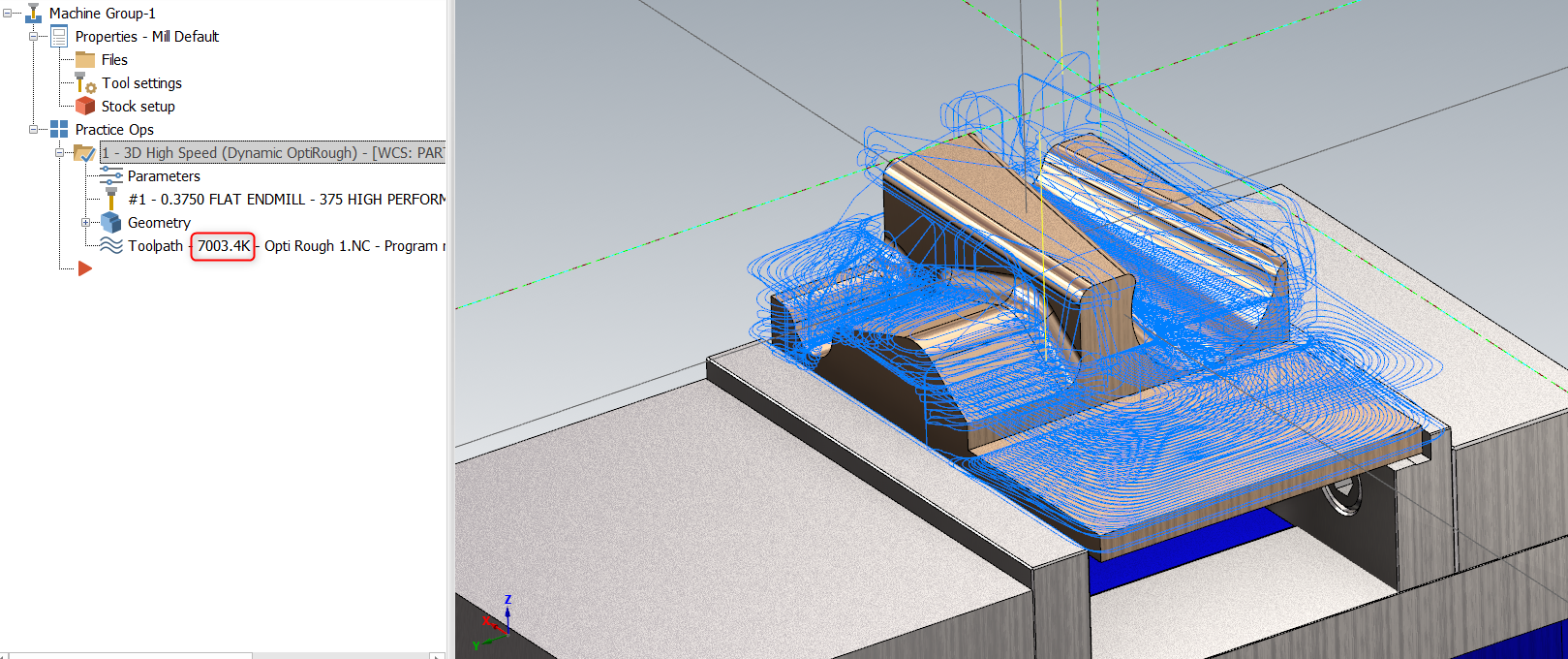
I need to reduce the file size, but I can’t push the tool any harder by changing the stepover, step-up, or step-down. Utilizing the Arc Filtering and changing the tolerance will help reduce the size of the toolpath.
First, let’s turn on the Arc Filtering with the checkbox shown below. Leave the rest at default and regenerate.

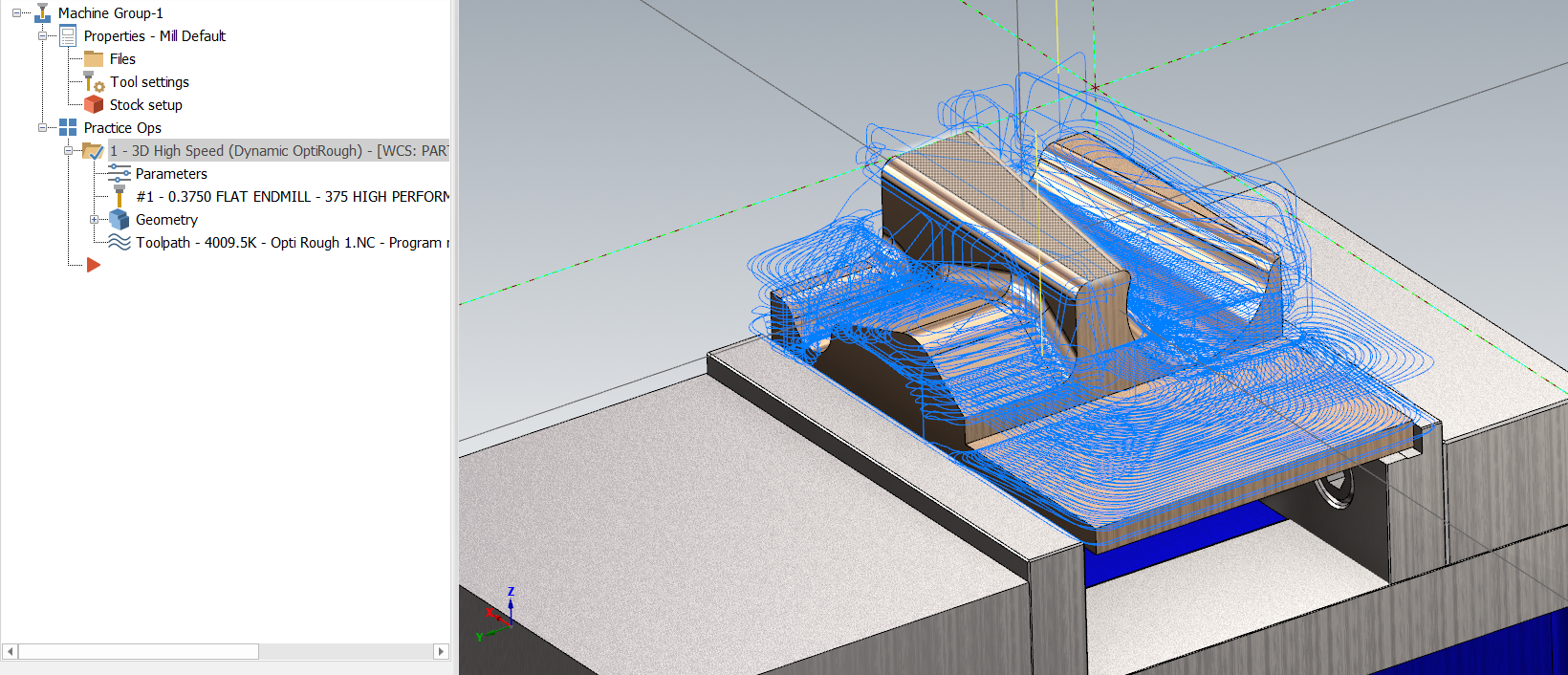
The new version of our toolpath is only 4009.5 KB and still cuts the part just as well as the first version. But we can do more to improve this. Go back into the settings and change the Cut Tolerance and Line/Arc tolerance to a 50/50 split as shown below.

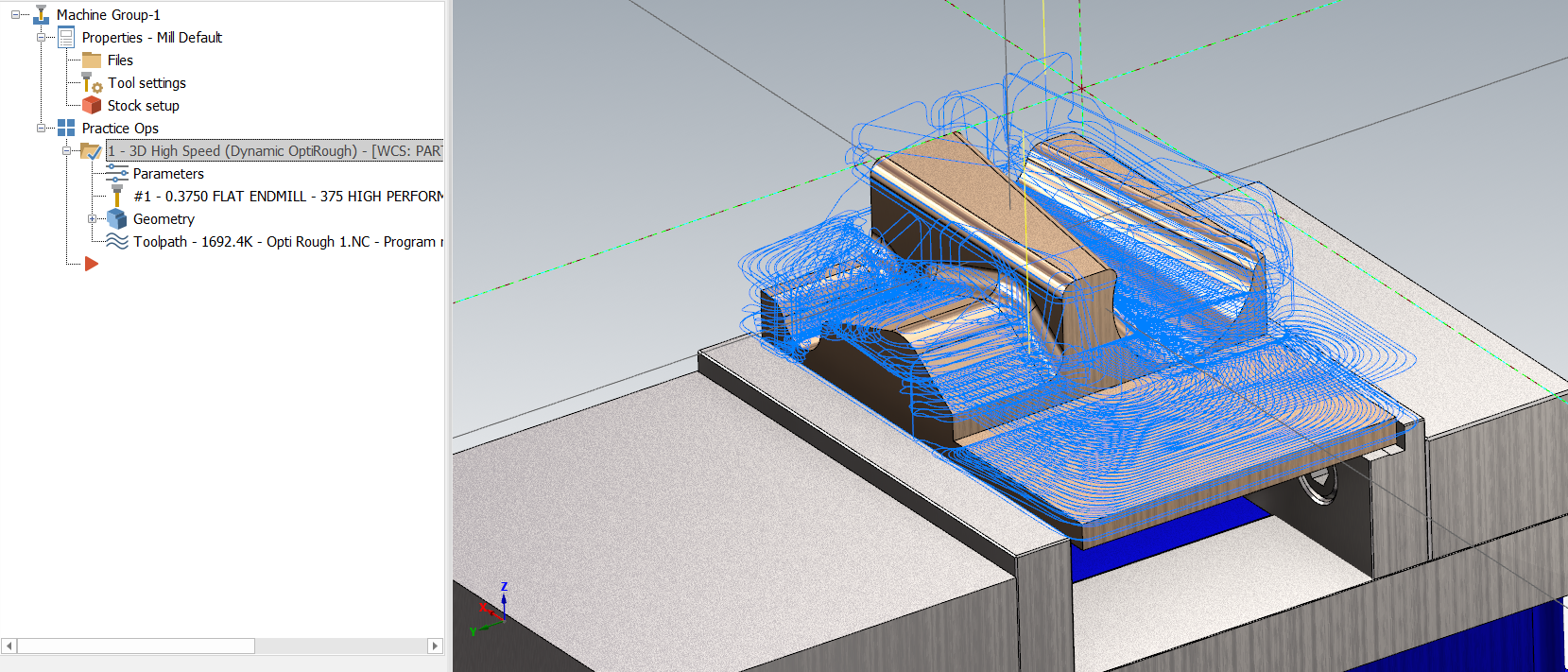
Now, we’re down to an NCI file size of 1692.4 KB. Our cut path has changed slightly because we have allowed Mastercam to turn more of these moves into arc moves rather than lines.
Let’s make one more change here. The Tolerance field at the top can be adjusted to allow even more blending of the toolpath lines. The rule of thumb here is to never exceed half of the total stock being left on walls. We’re leaving .015” (.38 mm) on the walls, so we can set the tolerance as high as .0075”. Now let’s change the value to .0075” then regenerate.

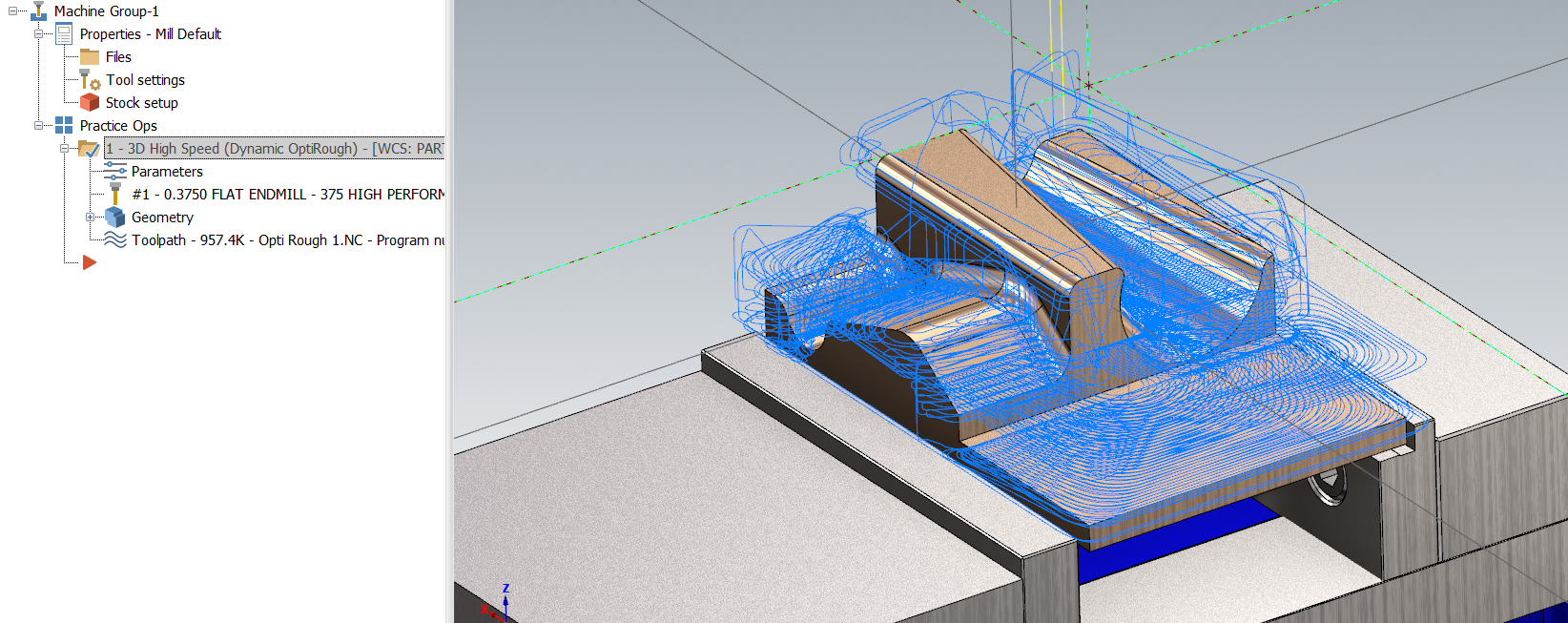
With that change, we’re now down to just a 957.4 KB NCI file size. Remember that we started at 7003.4 KB, which means we’ve reduced the toolpath size by about 86% while maintaining a high efficiency cut that still engages smoothly with your stock.
It’s also worth noting that the NCI file size isn’t the same thing as posted code file size. While the NCI file size here was 954.4 KB, the posted code was just 392 KB with this particular post.
If you want to learn more about the Arc Filter/Tolerance page you should check out this video on Streamingteacher.com. This video goes into much more detail on how everything works on that page, and what is happening with your toolpath when these options are enabled. For even more info you can check out this Presentation we ran a while back that dives deep into Arc Filter/Tolerance. Happy roughing!
For access to more in-depth Mastercam training content, sign up for a Streamingteacher account here!
Follow Us!
Facebook:https://www.facebook.com/Streamingteacher
LinkedIn:https://www.linkedin.com/company/streamingteacher/